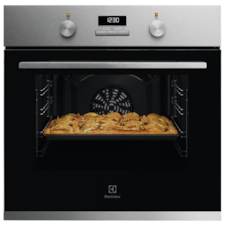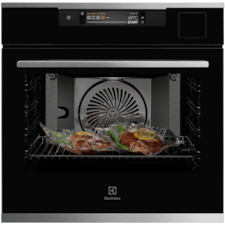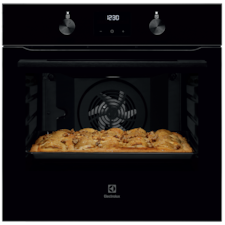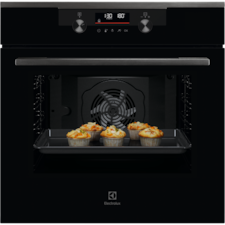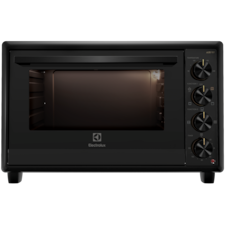At a Glance: Key Oven Tips for Beginners
|
Tip |
Why It's Important |
|
Always Preheat |
Ensures your food cooks evenly and at the correct temperature from the start. |
|
Know Your Settings |
Different symbols (fan, grill, etc.) are for different types of cooking. |
|
Use the Middle Rack |
When in doubt, the middle rack provides the most even heat distribution. |
|
Don't Open the Door |
Keep the door closed to maintain a stable temperature and avoid longer cooking times. |
|
Clean Regularly |
Prevents smoke, bad odours, and ensures your oven works efficiently. |
Ready to start cooking with confidence? Explore our full range of Electrolux ovens. Whether you're looking for a sleek built-in oven to integrate seamlessly into your kitchen or a versatile tabletop oven for compact spaces, discover the perfect model for your culinary aspirations..
First, Let's Understand the Common Oven Symbols
Before you can cook, you need to speak your oven's language. Here are some of the most common symbols and what they mean:
|
Icon Description |
Function Name |
What It's For & How It Works |
|
Line at top & bottom |
Top/Bottom Heat |
The classic setting. Heat comes from above and below, perfect for baking cakes and roasting on a single rack. |
|
Fan symbol |
Fan Cooking (Convection) |
Circulates hot air for a consistent temperature on all racks. It cooks faster and more evenly. Ideal for baking batches of cookies or roasting meats. |
|
Zigzag line at top |
Grill |
Intense, direct heat from the top element. Use this for browning the top of a lasagna, grilling cheese, or cooking thin cuts of meat. |
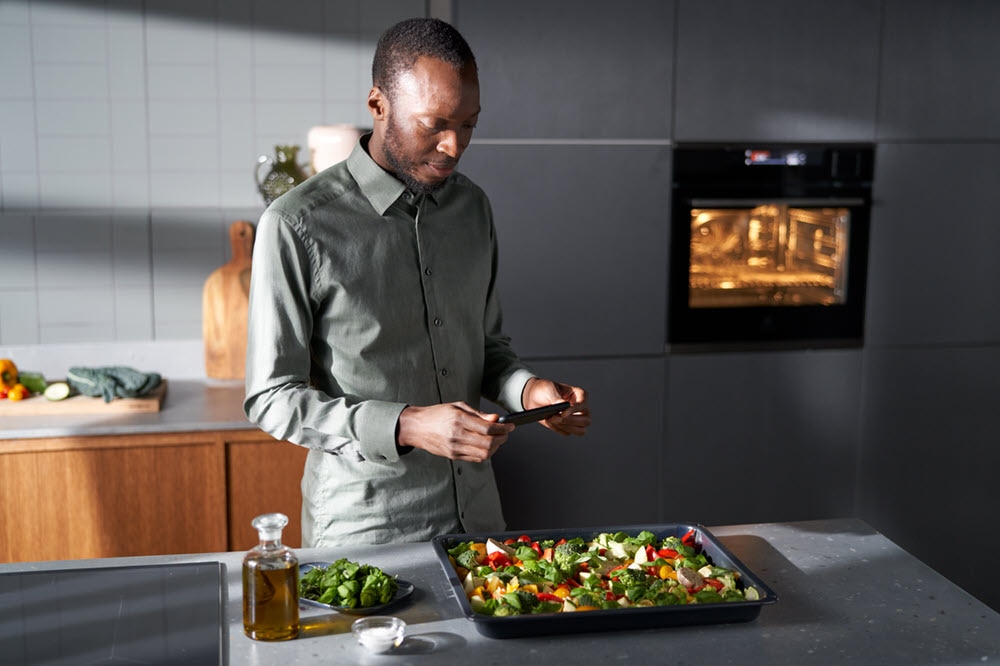
How to Cook in Your Oven: A Step-by-Step Guide
Step 1: Always Preheat Your Oven
Before you put any food in, your oven needs to reach the temperature specified in your recipe. This is called preheating, and it's essential for even cooking.
It typically takes 10-15 minutes to preheat. Most modern ovens have an indicator light that turns off or a digital display that beeps when it’s ready. Don't guess—wait for the signal!
Step 2: Choose the Correct Setting and Rack Position
The setting and rack position work together to achieve the perfect result.
- Settings: Use the symbols guide above to match the setting to your food. For most baking and roasting, Fan (Convection) or Top and Bottom Heat are your go-to options.
- Rack Position:
- Middle Rack: This is your default position. It offers the most even heat exposure, making it ideal for cakes, cookies, and most general dinners.
- Top Rack: Use this when you want extra browning on top, like for a gratin or pie.
- Bottom Rack: Perfect for getting a crisp crust on the bottom of a pizza or bread.
Step 3: Avoid Opening the Oven Door While Cooking
It’s tempting to peek, but every time you open the oven door, the temperature can drop significantly. This disrupts the cooking process and can lead to uneven or undercooked food.
Use the oven light and window to check on your food. Only open the door when it's time to turn the dish or check if it’s done. By following these steps, you can start creating delicious and healthy meals for your family.
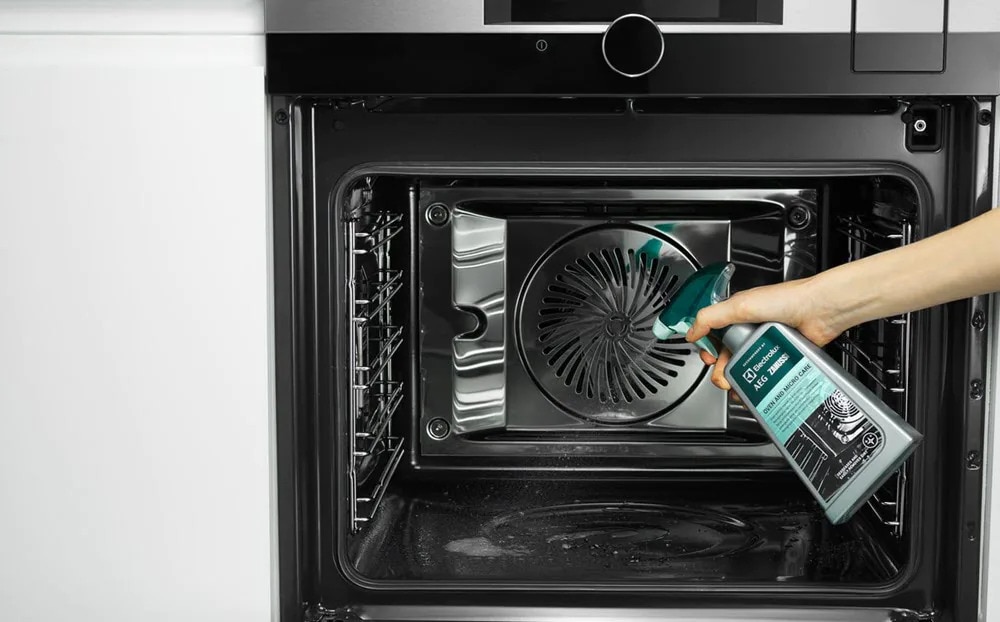
How Do I Clean My Oven?
A clean oven performs better and is safer to use. Regular cleaning prevents grease and food spills from burning, which can cause smoke and unpleasant odours that transfer to your food.
Modern Solution: Use Self-Cleaning Functions
Many Electrolux ovens are equipped with functions that do the hard work for you.
- Pyrolytic Cleaning: Heats the oven to very high temperatures, turning food residue into a fine ash that you can simply wipe away with a damp cloth. It’s a completely hands-free, chemical-free deep clean.
- Steam Cleaning: This function uses steam to soften grease and grime. You just pour water into the oven cavity and start the cycle. Afterwards, the softened residue can be easily wiped out.
Traditional Method: Use Homemade Cleaners
If your oven needs a deeper clean, you can use simple household ingredients.
- Baking Soda and Vinegar: Make a paste of baking soda and water, spread it on the interior surfaces (avoiding heating elements), and let it sit overnight. The next day, spray with white vinegar and wipe the grime away.
- Lemons: Place two halved lemons in an oven-safe bowl of water. Heat at 120°C for an hour. The steam will loosen grime, making it easier to wipe down once the oven has cooled.
For a complete walkthrough, see our detailed guide on how to clean your oven.
*Disclaimer: For stubborn buildup or professional care, consider contacting a certified technician.
Simple Oven Maintenance Tips
A little maintenance goes a long way in extending your oven's lifespan and ensuring it works efficiently.
- Clean the Door Seal: Gently wipe the rubber seal around the oven door with a damp cloth. A clean seal ensures heat stays locked inside, saving energy and improving cooking consistency.
- Keep Vents Clear: Make sure the fan vents are free from food debris to ensure proper air circulation.
- Schedule Professional Checks: Consider having a professional service your appliance annually to catch any potential issues early.
Find the Perfect Oven for Your Kitchen
A high-quality oven with intuitive controls and helpful features makes cooking a pleasure. Tired of guessing settings or struggling with stubborn grime? Electrolux ovens are designed to make your life easier, with clear symbols, precise temperature control, and effortless self-cleaning functions.
Whether you need a spacious built-in oven that integrates seamlessly into your kitchen or a versatile tabletop oven for smaller spaces, we have a solution for you. Explore our full range of Electrolux ovens or read our complete oven buying guide to find the perfect match for your cooking style.
-
- SurroundCook circulates hot air for even-cooking.
- Large capacity electric oven to cook for a crowd.
- AquaClean for a natural, easy clean.
-
- SteamPro delivers ultimate taste results.
- Smart food probe monitors core temperatures.
- Steamify makes it easier to cook with steam.
-
- AirFry your food for a fried taste with less oil.
- Different oven functions for diverse cooking.
- LED timer display sets exact cooking times.
Frequently Asked Questions
-
1. How do I know when my oven is fully preheated?
Most modern ovens have a visual or audible signal. An indicator light may turn off, or the digital display might show the target temperature and beep. Avoid putting food in before you get this signal.
-
2. What's the difference between a fan oven (convection) and a conventional oven?
A conventional oven uses static heating elements (usually top and bottom). A fan or convection oven adds a fan to circulate hot air, which cooks food faster and more evenly. If a recipe is for a conventional oven, you may need to reduce the temperature or cooking time for a fan oven.
-
3. Can I put any dish or pan in the oven?
No. Only use dishes labelled "oven-safe". This includes materials like ceramic, cast iron, metal bakeware, and heat-proof glass (like Pyrex). Never put plastic, wood, or dishes not designed for high heat in the oven, as they can melt, crack, or release harmful chemicals.

